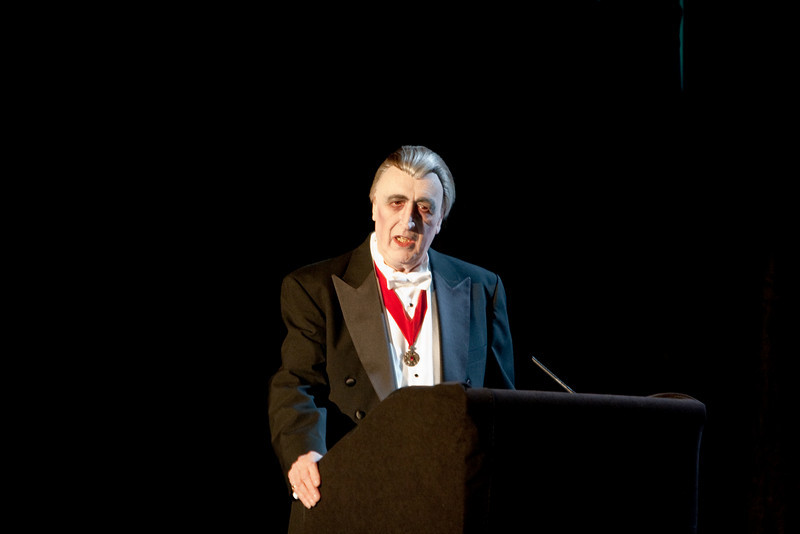 The winners of the 2013 Will Eisner Comic Industry Awards were announced at Comic-Con on July 19.
The winners of the 2013 Will Eisner Comic Industry Awards were announced at Comic-Con on July 19.
Best Short Story: “Moon 1969: The True Story of the 1969 Moon Launch,” by Michael Kupperman, in Tales Designed to Thrizzle #8 (Fantagraphics)
Best Single Issue (or One-Shot): The Mire, by Becky Cloonan (self-published)
Best Continuing Series: Saga, by Brian K. Vaughan and Fiona Staples (Image)
Best New Series: Saga, by Brian K. Vaughan and Fiona Staples (Image)
Best Publication for Early Readers (up to age 7): Babymouse for President, by Jennifer L. Holm and Matthew Holm (Random House)
Best Publication for Kids (ages 8–12): Adventure Time, by Ryan North, Shelli Paroline, and Braden Lamb (kaboom!)
Best Publication for Teens (ages 13–17): A Wrinkle in Time, by Madeleine L’Engle, adapted by Hope Larson (FSG)
Best Humor Publication: Darth Vader and Son, by Jeffrey Brown (Chronicle)
Best Digital Comic: Bandette, by Paul Tobin and Colleen Coover (Monkeybrain)
Best Anthology: Dark Horse Presents, edited by Mike Richardson (Dark Horse)
Best Reality-Based Work (tie): Annie Sullivan and the Trials of Helen Keller, by Joseph Lambert (Center for Cartoon Studies/Disney Hyperion); The Carter Family: Don’t Forget This Song, by Frank M. Young and David Lasky (Abrams ComicArts)
Best Graphic Album—New: Building Stories, by Chris Ware (Pantheon)
Best Adaptation from Another Medium: Richard Stark’s Parker: The Score, adapted by Darwyn Cooke (IDW)
Best Graphic Album—Reprint: King City, by Brandon Graham (TokyoPop/Image)
Best Archival Collection/Project—Strips: Pogo, vol. 2: Bona Fide Balderdash, by Walt Kelly, edited by Carolyn Kelly and Kim Thompson (Fantagraphics)
Best Archival Collection/Project—Comic Books: David Mazzucchelli’s Daredevil Born Again: Artist’s Edition, edited by Scott Dunbier (IDW)
Best U.S. Edition of International Material: Blacksad: Silent Hell, by Juan Diaz Canales and Juanjo Guarnido (Dark Horse)
Best U.S. Edition of International Material—Asia: Naoki Urasawa’s 20th Century Boys, by Naoki Urasawa (VIZ Media)
Best Writer: Brian K. Vaughan, Saga (Image)
Best Writer/Artist: Chris Ware, Building Stories (Pantheon)
Best Penciler/Inker (tie): David Aja, Hawkeye (Marvel), Chris Samnee, Daredevil (Marvel); Rocketeer: Cargo of Doom (IDW)
Best Painter/Multimedia Artist (interior art): Juanjo Guarnido, Blacksad (Dark Horse)
Best Cover Artist: David Aja, Hawkeye (Marvel)
Best Coloring: Dave Stewart, Batwoman (DC); Fatale (Image); BPRD, Conan the Barbarian, Hellboy in Hell, Lobster Johnson, The Massive (Dark Horse)
Best Lettering: Chris Ware, Building Stories (Pantheon)
Best Comics-Related Periodical/Journalism: The Comics Reporter, edited by Tom Spurgeon, www.comicsreporter.com
Best Comics-Related Book: Marvel Comics: The Untold Story, by Sean Howe (HarperCollins)
Best Educational/Academic Work: Lynda Barry: Girlhood Through the Looking Glass, by Susan E. Kirtley (University Press of Mississippi)
Best Publication Design: Building Stories, designed by Chris Ware (Pantheon)
Hall of Fame: Lee Falk, Al Jaffee, Mort Meskin, Trina Robbins, Spain Rodriguez, Joe Sinnott
Russ Manning Promising Newcomer Award: Russel Roehling
Bob Clampett Humanitarian Award: Chris Sparks and Team Cul deSac
Bill Finger Excellence in Comic Book Writing Award: Steve Gerber, Don Rosa
Will Eisner Spirit of Comics Retailer Award: Challengers Comics + Conversation, Chicago, IL


